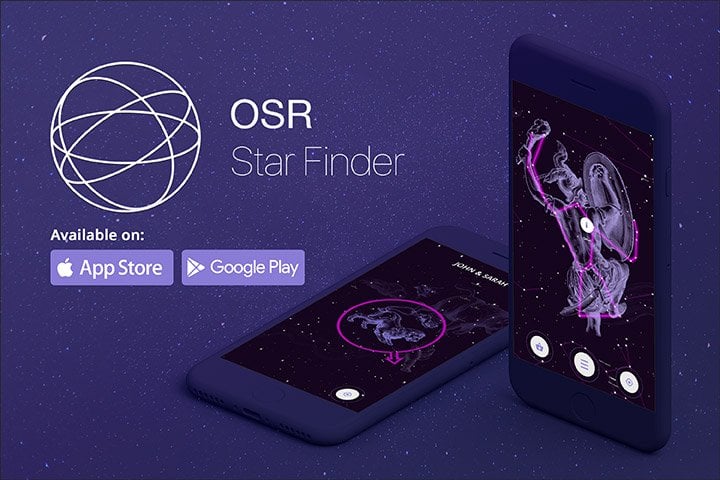Why a Star Chart is a Must-Have for Every Stargazer!

In this deep-diving guide, we’ll explore all the reasons why you need a star chart to enhance your stargazing experience!
Stargazing is a fascinating and timeless hobby that has enchanted us for centuries. From ancient civilisations to modern-day astronomers, the beauty of the night sky never fails to captivate us. However, with busy city life and the light pollution it produces, it can be challenging to fully appreciate the wonders of the universe. That’s why a star chart could be just what you need!
Yes, star charts are the one tool every astronomy enthusiast should have in their arsenal. But how do they work, and what can you do with them? Well, let’s dive into the world of star charts and find out more!
What Is a Star Chart?

Simply put, a star chart is a map of the night sky that shows the positions of stars and other celestial objects. These charts are incredibly detailed and can be used to identify specific stars, constellations, and planets visible from your location. They also include important information such as rising and setting times for different objects throughout the night.
But why do we need a star chart when we can simply look up at the stars? The answer is simple – a star chart allows us to navigate the night sky with ease and precision. Instead of randomly gazing at the stars, a star chart helps us locate and identify specific objects, making stargazing more enjoyable and educational.
Star charts have long been a staple in both professional astronomy and casual stargazing. They help us identify stars and constellations, plan observations, and understand the movement of celestial bodies. For hobbyists, star charts make stargazing more enjoyable and educational. For professional astronomers, they are essential tools for research and discovery.
Types of Star Charts
Various types of star charts are available, from basic handheld versions to sophisticated digital apps. The most common types include:
- Planispheres: These circular discs can rotate to show the night sky for a specific date and time.
- Sky Atlases: Similar to road maps, these charts provide a detailed view of the entire night sky.
- Smartphone Apps: With advanced technology, there are now various apps available that use your phone’s camera or GPS to display a real-time view of the night sky, like the OSR’s Star Finder App.
Each type has its advantages, so it’s best to choose one that suits your stargazing needs and preferences. Experiment with different types to find the one that works best for you.
Benefits of Using a Star Chart

Using a star chart offers numerous benefits, enhancing your stargazing experience in several enchanting ways. It helps you identify constellations and planets, understand celestial movements, and deepen your appreciation for the night sky. Whether you’re a novice or an experienced astronomer, a star chart can transform your evening under the stars into a more immersive and educational adventure.
Discover New Constellations
One of the most exciting aspects of using a star chart is that it allows you to discover new constellations. While we may all be familiar with the Big Dipper or Orion’s Belt, there are countless other beautiful formations waiting for you to explore. With a star chart in hand, you can easily locate these lesser-known constellations and expand your knowledge of the night sky.
Enhance Your Stargazing Experience
Using a star chart can also enhance your overall stargazing experience. Instead of randomly gazing at the sky, you can use the chart to set specific goals and locate specific objects. This makes your stargazing sessions more productive and enjoyable as you discover new wonders in the sky. Plus, with the added knowledge of constellations and stars, you can impress your friends and family with your newfound skills.
Fun Activity for All Ages
Stargazing may seem like an activity reserved for adults or serious astronomers, but using a children’s star chart can make it accessible and enjoyable for all ages. Children can have fun locating different stars and objects on the chart, while adults can delve deeper into the science behind constellations. It’s a great way to bond as a family or group of friends while learning about the wonders of our universe.
How to Use a Star Chart
Using a star chart may initially seem daunting, especially if you’re new to stargazing. But with a little practice and patience, it becomes much easier and more enjoyable. Here are some tips on how to use a star chart!
Before using a star chart, make sure you understand all the symbols and markings. Most charts come with a key or guide that explains these in detail. Using your latitude and longitude coordinates, set the chart to show the night sky for your specific location and time.
Next, hold the chart up towards the sky and orient it correctly. If using a planisphere, rotate it until the current date and time align with your local horizon. For sky atlases, align it with north or south depending on which hemisphere you’re in.
Once you have correctly lined up your star chart, use a flashlight with a red filter to avoid disrupting your eyes’ natural ability to adjust to the dark. Then, follow the markings on the chart to locate stars, constellations, planets, and other celestial objects in the night.
The Rich History of Star Charts
The history of star charts dates back to ancient civilisations. The Babylonians, Greeks, and Chinese all created early versions of star maps for navigation and to understand the cosmos. These early star charts were also intricately connected to mythology and storytelling, as constellations often represented characters and stories in their culture.
Today, star charts continue to be an essential tool for astronomers and stargazers alike. With technological advancements, we now have digital versions we can access through apps or online programs. However, many still prefer the traditional paper versions as they allow for a more hands-on and memorable stargazing experience.
Make Your Own Star Chart

Creating a personalised star chart can be a fun and educational project. There are many online resources and software available to help you generate custom star charts based on your location, time, and date.
You can also take a more hands-on approach by using a planisphere or sky atlas kit. These typically come with pre-printed templates that you can trace onto cardstock or cardboard, then cut out and assemble yourself.
Whichever method you choose, remember to have fun and be patient. Creating a star chart requires attention to detail and precision. But the end result will be a unique tool that allows you to explore the wonders of the night sky anytime you want! Remember to add personal touches to your star chart too, such as highlighting your favourite constellations or including dates of significant celestial events.
The Future of Star Charts
The future of star charts lies in technology. Augmented reality (AR) and virtual reality (VR) are transforming how we interact with the night sky. Imagine using an AR headset to see real-time constellations overlaid on the sky! It opens up a whole new world of possibilities for stargazing and astronomical education.
Additionally, with the rise of space tourism and private space exploration, we may soon have access to more accurate and detailed star charts from different parts of our galaxy. These advancements could revolutionise our understanding of the universe and inspire future generations to explore the wonders beyond Earth.
Explore the Night Sky with the OSR Star Finder

More than just maps, star charts are gateways to the universe. They connect us to the stars, helping us understand and appreciate the vastness of our cosmos. Whether you’re a seasoned astronomer or a curious beginner, star charts make stargazing an enriching experience.
Ready to start your exploration of the stars? With the OSR Star Finder App, you can bring them to your fingertips! This innovative app serves as your personal guide, helping you navigate the heavens with ease and precision. Dive deeper into the wonders of the universe and enrich your stargazing experience like never before. Download the app today and let the magic of the cosmos unfold before your eyes!

